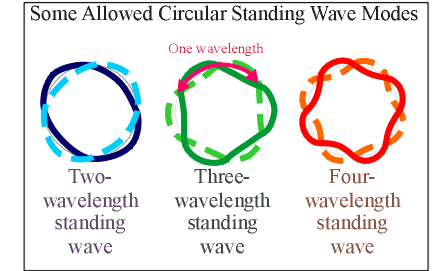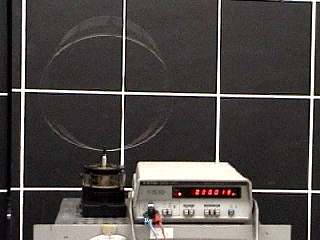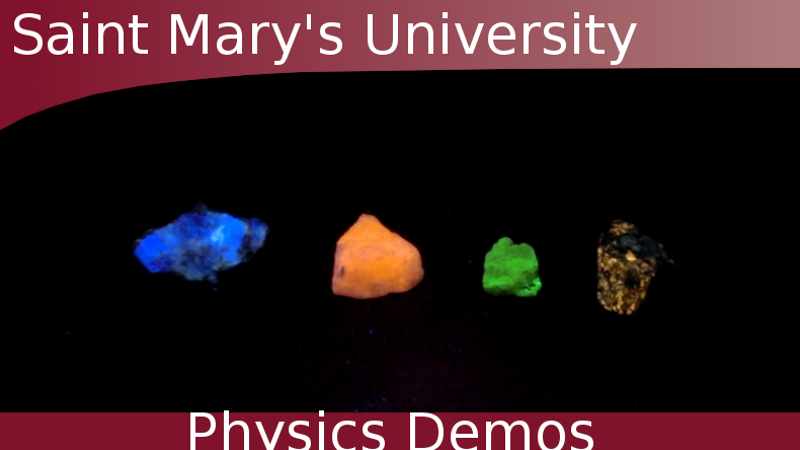A bouncing hoop of wire illustrates standing waves.
Watch Video:
Other Demos of Interest:
Teachable Topics:
- Electron orbitals
- Wave-Particle duality
Theory:
As scientists tried to explain the physics of atoms, they soon realized that they could no longer treat small objects (such as electrons) as particles. Electrons were discovered to have wave-like characteristics as well. This discovery allowed great advances in the area of physics called quantum mechanics – the study of physics on the very, very small scale.

One such advancement involves the energy levels of electrons in an atom. Experiments showed that electrons in atoms could only have certain quantized energies. This observation was explained by imagining the electron as a wave forming circular standing waves about the nucleus. For a standing wave to form in a circle, an integral number of wavelengths must "fit" within the circumference. This means that only some discrete wavelengths are allowed to form in a circle of a given radius (some examples of allowed standing wave modes are shown above). Because the electron energies depend on their wavelengths and the wavelengths are discrete, the allowed energies must also be discrete.
To illustrate standing waves in a circle, the video above shows an oscillating metal hoop. The oscillations set up standing waves in the hoop. However, Danning Bloom and Dan W. Bloom show in their article (Vibrating Wire Loop and the Bohr Model, The Physics Teacher, Vol. 41, page 292, May 2003) that the allowed standing wave modes are very different from the electron’s modes. Put simply, the atom allows modes with an even number of half-wavelengths, while the wire allows only modes with an odd number of half-wavelengths. Basically, this has to do with how the clamp that connects the hoop to the oscillator constrains the hoop. While the hoop doesn’t show the right standing wave patterns, it is useful to show that standing waves can indeed form in a loop.
Apparatus:
- Frequency oscillator
- Frequency counter
- Mechanical vibrator
- Metal hoop

Figure 2: Apparatus
Procedure:
- Stick the metal hoop in the mechanical vibrator
- Turn on the frequency oscillator and frequency counter
- It may take a few seconds for the equipment to warm up
- Adjust the frequency oscillator in order to find the first resonance, and then proceed to find the next highest frequency.






